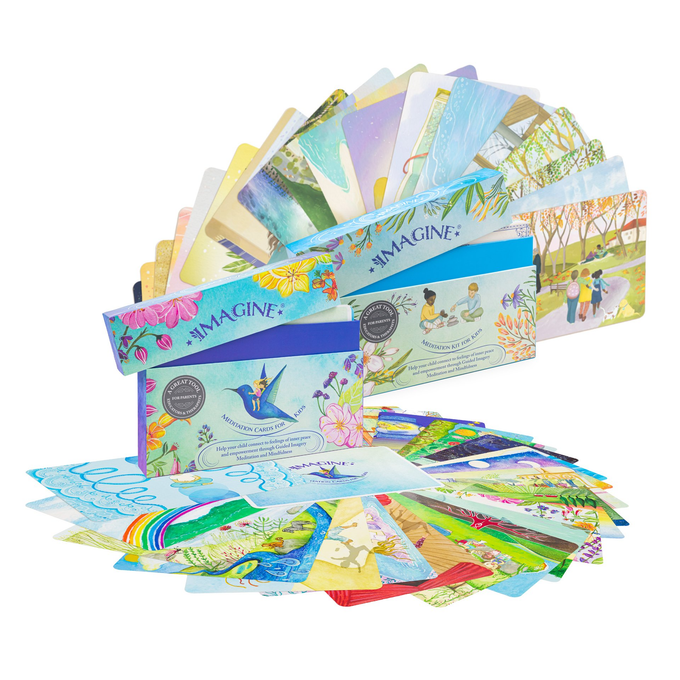IMAGINE. Meditation Made for Kids.
The Cards
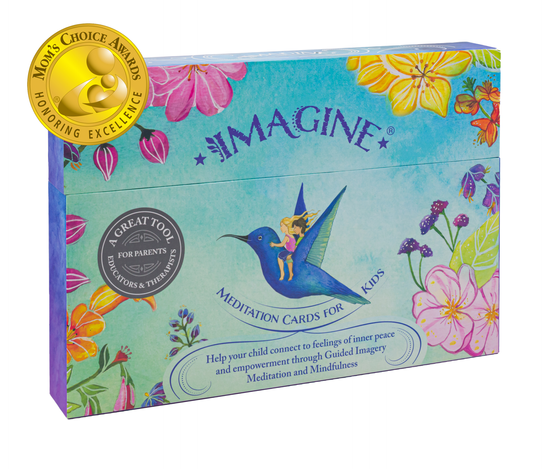
The award-winning Imagine Meditation Cards for Kids offers a fun and relaxing way for kids to practice meditation, and connect to feelings of inner peace and empowerment. With Imagine Meditation Cards for Kids children can enjoy their wonderful imagination, which knows no limits and is always available for them.
Includes 26 oversize cards with content-rich scripts and vibrant illustrations of Guided Imagery meditations for kids, a Mindfulness breathing exercise to practice before any meditation, and 2 DIY cards for kids to create their own meditations.
The Kit
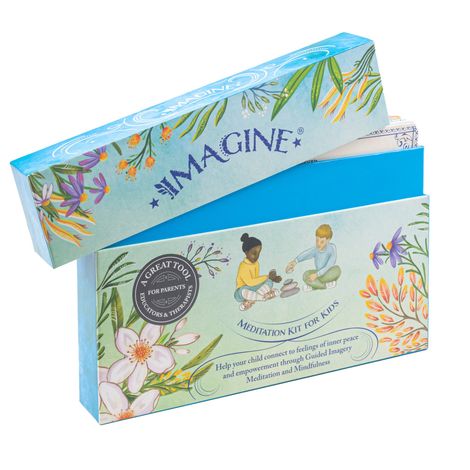
Imagine Meditation Kit for Kids offers kids of all ages a fun and engaging intro to Guided Imagery meditation, so they can learn to unwind and practice self-care on a regular basis.
The kit includes 18 oversize cards with content-rich scripts and vibrant illustrations of Guided Imagery meditations for kids, 6 Affirmation Cards, a Mindfulness breathing exercise to practice before any meditation and an easy-to-use "navigation tool" to assist you selecting the right meditation depending on the feeling or the challenge.
Benefits
Practicing meditation on a regular basis can greatly contribute to children’s sense of security and self-esteem, to enhance their ability to concentrate, cope with stress and relax, and even help them realize their strengths and skills. In a world of overwhelming technology, this is increasingly needed.
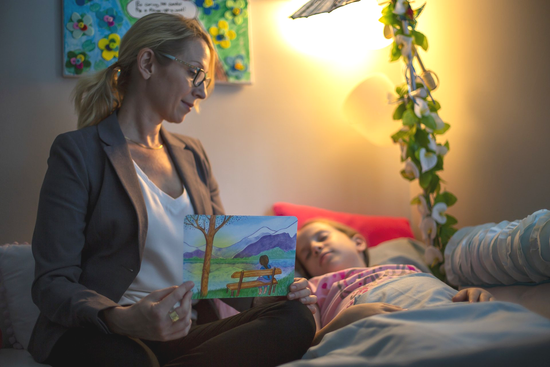
Our Story
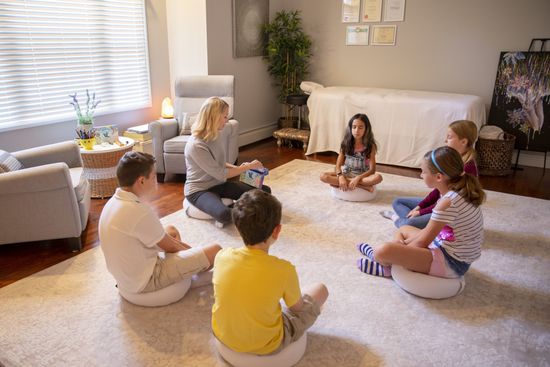
The Imagine Blog
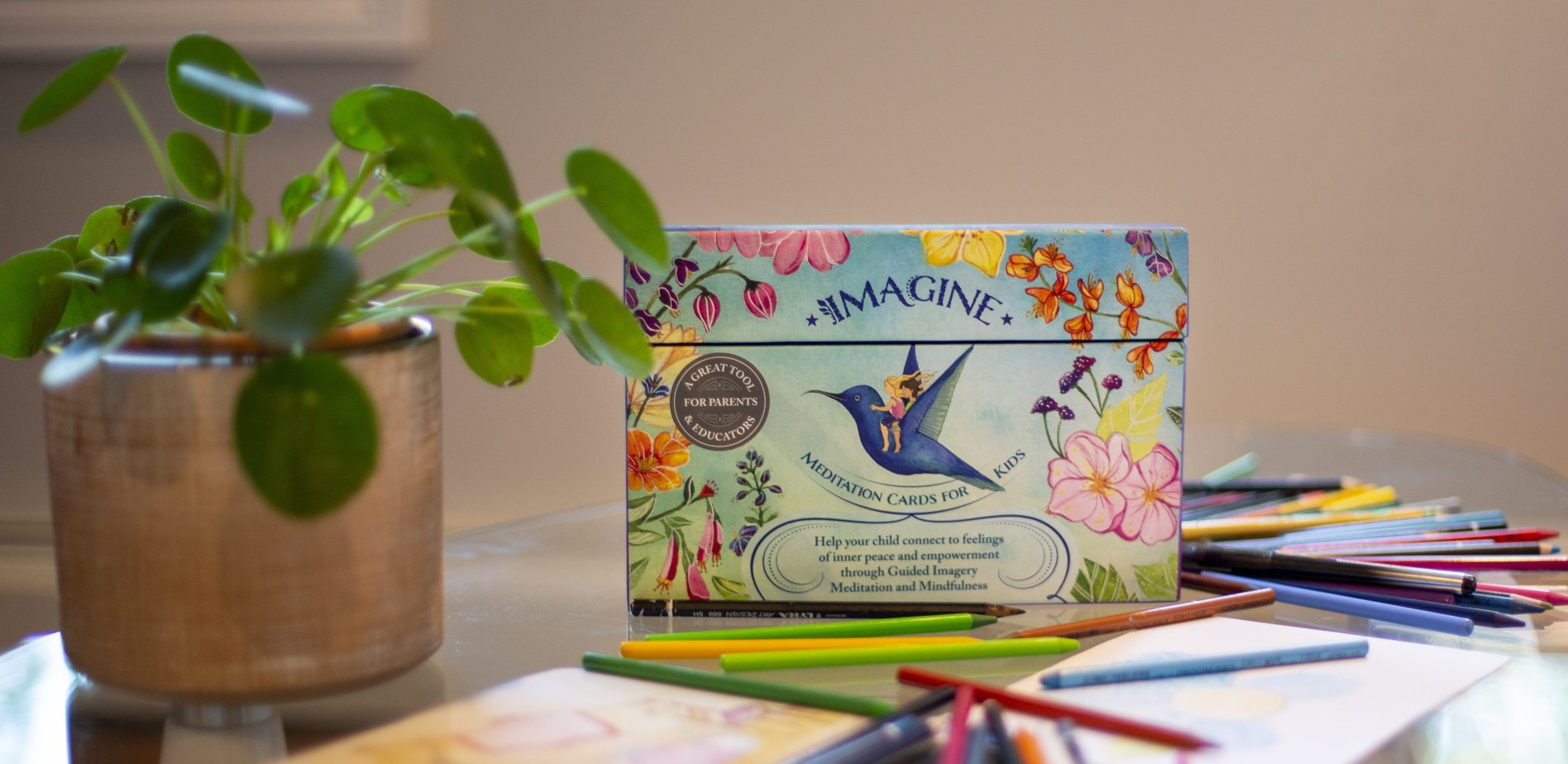


Customers Reviews
-

"Incredible! We're in love with the cards! Every single word is simply delightful."
Button 
"Kids and I made it our new bed time tradition. They do not go to sleep without it. Very good tradition."
Button
"These are so beautiful, bought them to use with my kid but think I'm gonna start using them first myself!"
Button
"I read it to my kids every night before sleep. We've read them all and we start all over again. They like it a lot!"
Button
“Meditation is not very familiar to me, but these cards made me want to add meditation into my kids’ evening routine”

“I took a moment to think about my meditation and it helped me calm before taking a test at school”

“I felt so much more focused at the basketball game. Even my coach noticed it!”

“I imagined an amazing bird made out of water…”

“I imagined a tree that had rainbow colors…”

“I imagined a library with magical books. When I opened a book, the room turned into that book’s setting, as if I was inside that story.”
The Imagine Store
Follow Us
How to Use the Cards | Privacy Policy | Terms & Conditions
All Rights Reserved Imagine Meditation LLC 2019 | info@theimaginecards.com

